
Tamarindo: A Tropical Paradise in Costa Rica
Discover Tamarindo, Costa Rica's idyllic beach town, offering stunning beaches, thrilling surf, vibrant nightlife, and rich natural beauty in a warm, welcoming atmosphere.
Nestled along the Pacific coast of Costa Rica, Tamarindo is a vibrant beach town that offers an unforgettable experience for tourists. Known for its stunning beaches, lush landscapes, and lively atmosphere, Tamarindo is a haven for both adventure seekers and those looking to unwind in a tropical paradise. The town boasts a variety of activities to suit every taste. Surfing enthusiasts will find Tamarindo's waves perfect for all skill levels, while nature lovers can explore the nearby national parks and reserves, home to diverse wildlife and breathtaking scenery. The estuary of the Tamarindo River is a must-visit for bird watching and kayaking, offering a serene escape from the bustling town. Tamarindo's culinary scene is equally impressive, with a wide range of restaurants serving everything from traditional Costa Rican dishes to international cuisine. The town's nightlife is vibrant, with numerous bars and clubs where you can dance the night away or enjoy a quiet drink under the stars. Shopping enthusiasts will also appreciate the local markets and boutiques, offering unique souvenirs and handmade crafts. Whether you're looking for adventure, relaxation, or a bit of both, Tamarindo has something for everyone. Its warm, welcoming atmosphere and stunning natural beauty make it a top destination for travelers from around the world.
Local tips in Tamarindo
- Visit during the dry season (December to April) for the best weather.
- Rent a bike or scooter to explore the town and nearby areas easily.
- Take a surfing lesson; Tamarindo is known for its beginner-friendly waves.
- Don't miss the sunset at Playa Tamarindo; it's a breathtaking sight.
- Try the local cuisine, especially fresh seafood and traditional Costa Rican dishes.
Tamarindo: A Tropical Paradise in Costa Rica
Nestled along the Pacific coast of Costa Rica, Tamarindo is a vibrant beach town that offers an unforgettable experience for tourists. Known for its stunning beaches, lush landscapes, and lively atmosphere, Tamarindo is a haven for both adventure seekers and those looking to unwind in a tropical paradise. The town boasts a variety of activities to suit every taste. Surfing enthusiasts will find Tamarindo's waves perfect for all skill levels, while nature lovers can explore the nearby national parks and reserves, home to diverse wildlife and breathtaking scenery. The estuary of the Tamarindo River is a must-visit for bird watching and kayaking, offering a serene escape from the bustling town. Tamarindo's culinary scene is equally impressive, with a wide range of restaurants serving everything from traditional Costa Rican dishes to international cuisine. The town's nightlife is vibrant, with numerous bars and clubs where you can dance the night away or enjoy a quiet drink under the stars. Shopping enthusiasts will also appreciate the local markets and boutiques, offering unique souvenirs and handmade crafts. Whether you're looking for adventure, relaxation, or a bit of both, Tamarindo has something for everyone. Its warm, welcoming atmosphere and stunning natural beauty make it a top destination for travelers from around the world.
When is the best time to go to Tamarindo?
Iconic landmarks you can’t miss
Occidental Tamarindo
Experience luxurious comfort and adventure at Occidental Tamarindo, a premier hotel in the heart of Costa Rica's stunning Guanacaste Province.
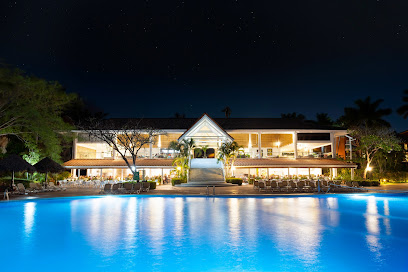
Tamarindo Diria
Discover the perfect blend of luxury and nature at Tamarindo Diria, your gateway to unforgettable Costa Rican adventures.
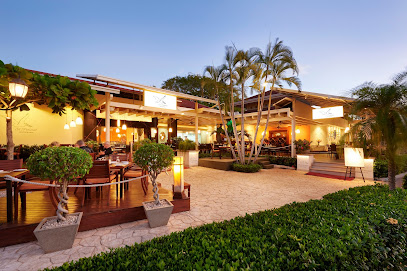
El Mercadito de Tamarindo Food and Cocktail Market
Experience the vibrant culinary scene at El Mercadito de Tamarindo, where diverse flavors and tropical vibes come together for an unforgettable dining experience.
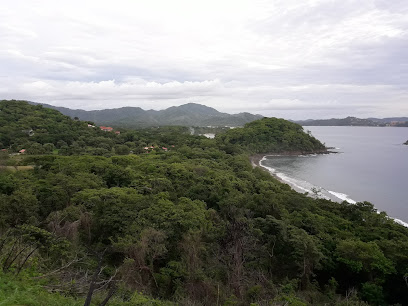
Playa Avellanas
Experience the natural beauty and vibrant surf culture of Playa Avellanas, a stunning beach destination in Guanacaste, Costa Rica.
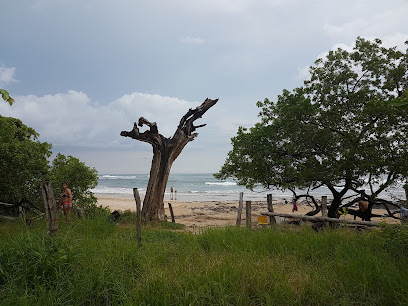
Tamarindo Beach Costa Rica
Discover the beauty of Tamarindo Beach, Costa Rica: a sun-soaked paradise with thrilling adventures, vibrant nightlife, and stunning sunsets.

Tamarindo, Costa Rica
Explore Tamarindo, Costa Rica - A Tropical Paradise of Surfing, Sunsets, and Vibrant Culture Awaiting Your Arrival.
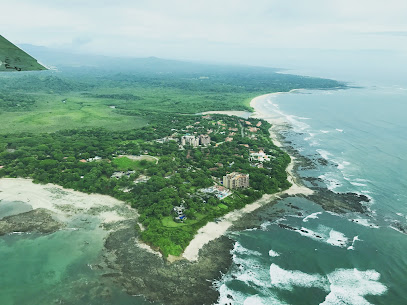
L' Estanco El Jardin Escondido
Experience the vibrant flavors and enchanting ambiance at L' Estanco El Jardin Escondido, a hidden culinary treasure in Tamarindo, Costa Rica.
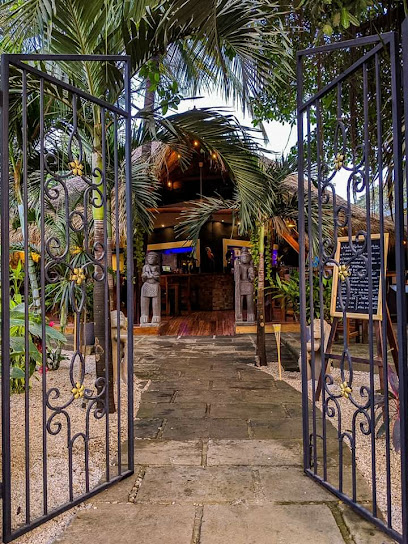
Nogui's Restaurant
Experience the essence of Costa Rican cuisine at Nogui's Restaurant in Tamarindo, where fresh seafood meets stunning ocean views for an unforgettable dining experience.

Little Lucha
Discover the best tacos in Tamarindo at Little Lucha, where fresh ingredients and vibrant flavors create a culinary experience that tantalizes your taste buds.
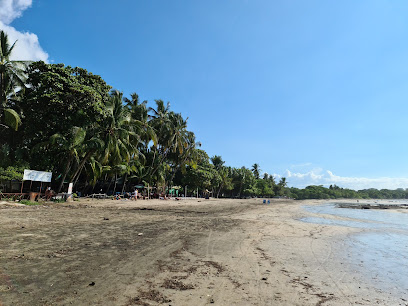
Selina Tamarindo
Experience the perfect blend of relaxation and productivity at Selina Tamarindo, your go-to destination for adventure and coworking in Costa Rica.
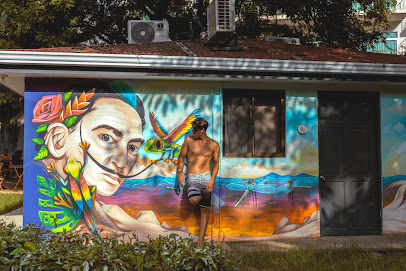
Pangas Beach Club
Experience the vibrant culinary scene of Tamarindo at Pangas Beach Club, where fresh flavors meet stunning ocean views for an unforgettable dining experience.
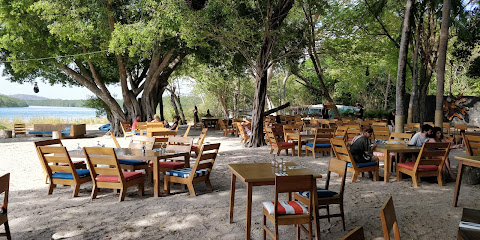
Iguana Surf Camp & Surf Shop
Experience surfing bliss at Iguana Surf Camp & Surf Shop in Tamarindo, Costa Rica, where adventure meets relaxation in a tropical paradise.
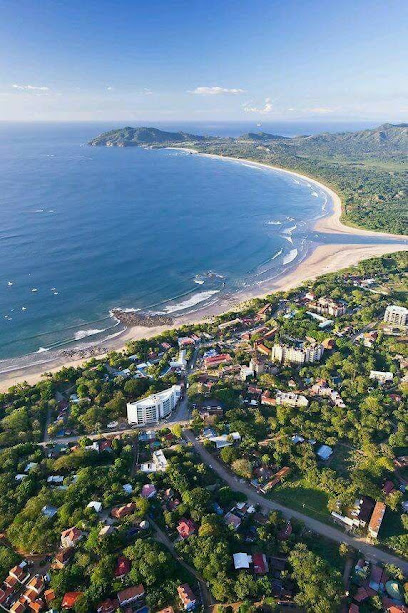
La Botella de Leche
Discover the heart of Tamarindo at La Botella de Leche, where comfort meets adventure in the beautiful Guanacaste Province.

Capitán Suizo Beachfront Boutique Hotel
Experience the serene beauty of Capitán Suizo Beachfront Boutique Hotel, where luxury meets nature on the stunning shores of Playa Tamarindo, Costa Rica.
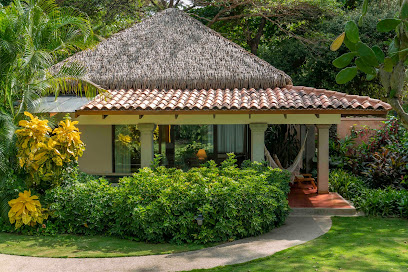
Surf Shack Burgers & Wings
Experience the best of Costa Rican flavor at Surf Shack Burgers & Wings in Tamarindo, where burgers and wings meet paradise.

Unmissable attractions to see
Playa Conchal
Discover the enchanting Playa Conchal in Guanacaste Province, where stunning beaches, vibrant marine life, and luxury accommodations await.
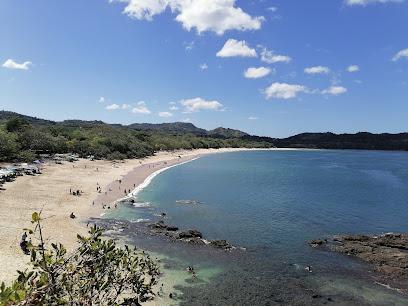
Parque Nacional Marino Las Baulas
Explore the enchanting beauty of Parque Nacional Marino Las Baulas, a haven for wildlife and stunning coastal landscapes in Costa Rica's Guanacaste Province.

Tamarindo Beach Costa Rica
Discover the enchanting Tamarindo Beach in Costa Rica, where golden sands meet azure waters in a vibrant tropical paradise.
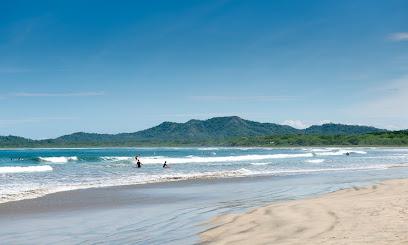
Four Seasons Peninsula Papagayo, Costa Rica
Experience unparalleled luxury and adventure at Four Seasons Peninsula Papagayo, Costa Rica's premier resort hotel, surrounded by stunning natural beauty.

Del Coco Beach
Discover the beauty and charm of Del Coco Beach in Guanacaste, Costa Rica—a perfect blend of relaxation and adventure awaits.
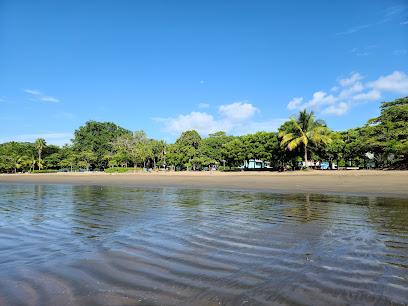
Reserva Conchal Beach Resort, Golf & Spa
Discover the ultimate blend of luxury and nature at Reserva Conchal Beach Resort, Golf & Spa in Costa Rica's stunning Guanacaste Province.

Playa Nacascolo
Experience the tranquil charm of Playa Nacascolo, a perfect blend of relaxation and adventure in Guanacaste, Costa Rica.
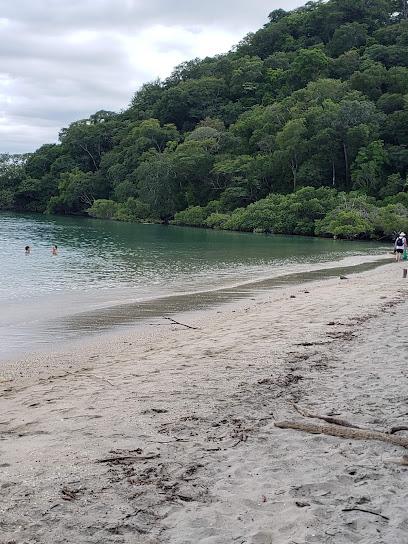
Pacific Coast Dive Center
Explore the underwater wonders at Pacific Coast Dive Center in Playa Flamingo, where adventure meets conservation in Costa Rica's pristine waters.

Diamante Eco Adventure Park
Experience the thrill of adventure and the beauty of nature at Diamante Eco Adventure Park, a top destination in Guanacaste, Costa Rica.
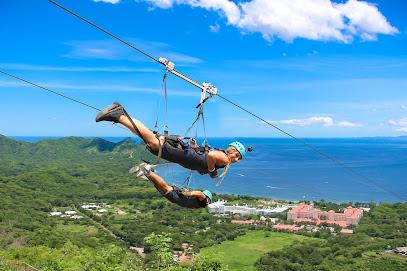
Hacienda El Viejo Wetlands
Explore the enchanting Hacienda El Viejo Wetlands in Guanacaste, Costa Rica—where culture, nature, and adventure unite for an unforgettable experience.
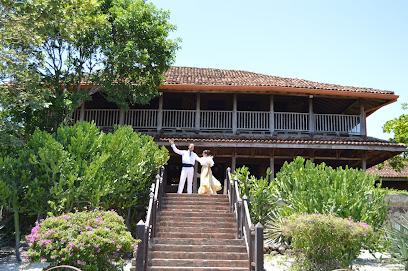
Erik Garcia Conchal Beach
Experience the serene beauty and vibrant marine life at Erik Garcia Conchal Beach, a tropical paradise in Guanacaste, Costa Rica.

Playa Hermosa, Costa Rica
Explore the beauty of Playa Hermosa, a tranquil beach destination in Guanacaste, Costa Rica, perfect for relaxation and outdoor adventures.
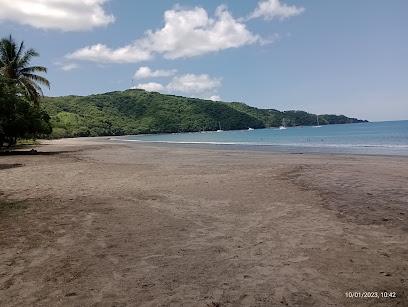
ATV Tamarindo
Experience the thrill of ATV adventures in Tamarindo, Costa Rica, exploring stunning landscapes and vibrant ecosystems on guided tours.

Danta Beach
Discover the serene beauty of Danta Beach in Guanacaste Province, where golden sands meet azure waters for an unforgettable tropical escape.
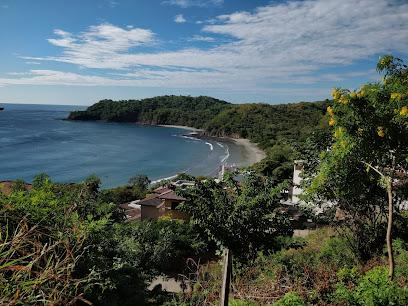
Native's Way Costa Rica - Tours and Transfers
Discover the beauty of Costa Rica with Native's Way Tours - personalized adventures and seamless transportation in Tamarindo.
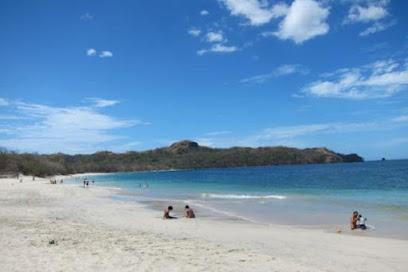
Essential places to dine
El Mercadito de Tamarindo Food and Cocktail Market
Explore the diverse flavors of El Mercadito de Tamarindo – from Argentinian delights to refreshing cocktails in Costa Rica's vibrant food market.
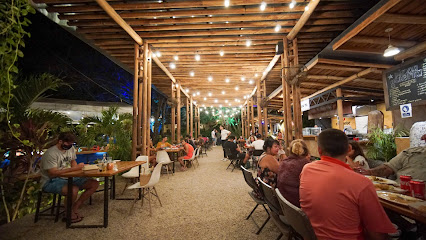
Green Papaya Taco Bar
Experience authentic Costa Rican tacos at Green Papaya Taco Bar in Tamarindo – where every bite is a taste adventure.
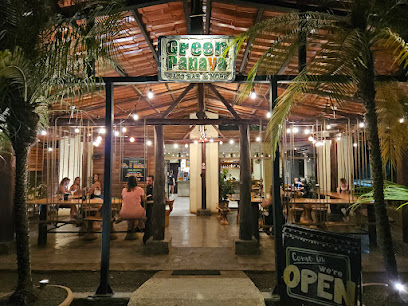
L' Estanco El Jardin Escondido
Experience the best of Costa Rican cuisine at L' Estanco El Jardin Escondido in Tamarindo—where flavor meets creativity in every dish.
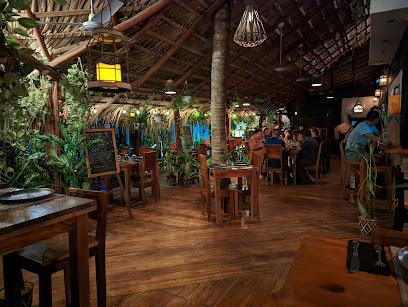
Nogui's Restaurant
Discover Nogui's Restaurant in Tamarindo: A culinary delight with fresh seafood and breathtaking ocean views.
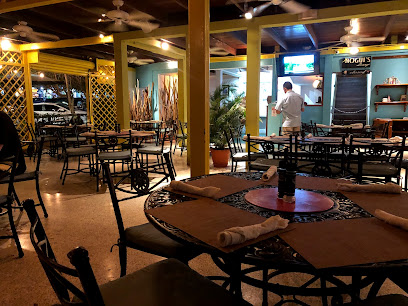
El Chiringuito
Experience authentic Costa Rican cuisine at El Chiringuito in Tamarindo - where every meal is a celebration of flavor and culture.
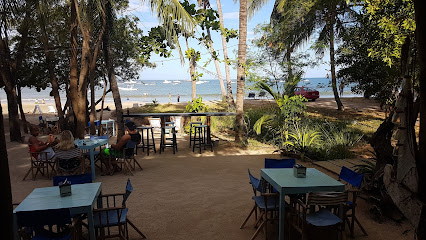
Little Lucha
Discover the vibrant flavors of Mexico at Little Lucha in Tamarindo – a taco haven where every bite tells a delicious story.
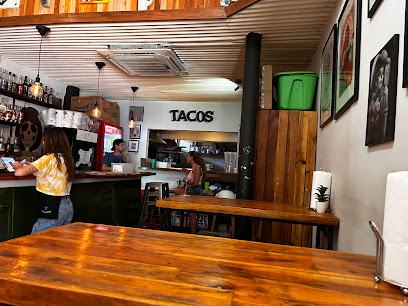
Pangas Beach Club
Experience unforgettable flavors at Pangas Beach Club in Tamarindo – where culinary delight meets breathtaking ocean views.
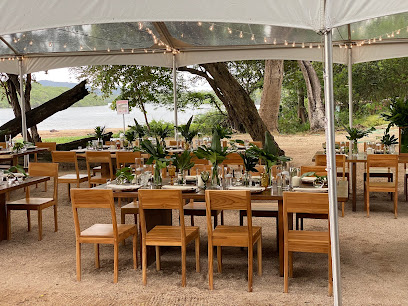
La Boca Tamarindo
Discover La Boca Tamarindo: A culinary gem offering delightful pasta dishes, refreshing cocktails, and vibrant atmosphere in beautiful Costa Rica.
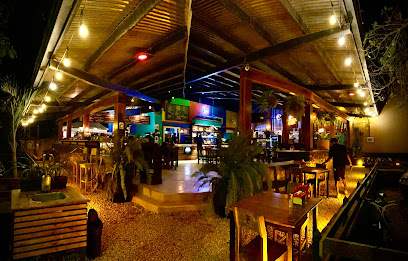
Pico Bistro Tamarindo
Experience the vibrant flavors of Costa Rica at Pico Bistro Tamarindo – where local ingredients meet culinary creativity.

Pizzeria La Baula
Experience mouthwatering pizzas made with fresh ingredients in the vibrant atmosphere of Tamarindo at Pizzeria La Baula.
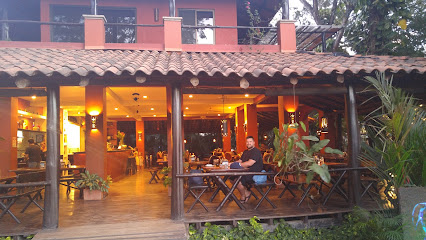
Falafel Bar
Experience authentic Mediterranean cuisine at Falafel Bar in Tamarindo - where fresh flavors meet a vibrant atmosphere.

Dragonfly Bar & Grill
Experience exceptional dining at Dragonfly Bar & Grill in Tamarindo—where local flavors meet international cuisine in a charming atmosphere.
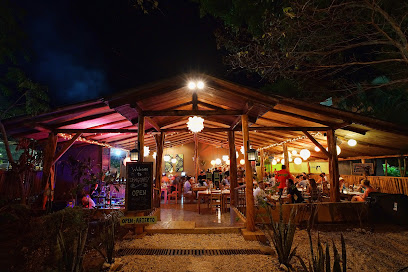
Surf Shack Burgers & Wings
Experience mouthwatering burgers and wings at Surf Shack Burgers & Wings in Tamarindo - where taste meets tropical vibes.

Longboard BBQ
Experience authentic American barbecue at Longboard BBQ in Tamarindo – where flavor meets fun in a tropical paradise.
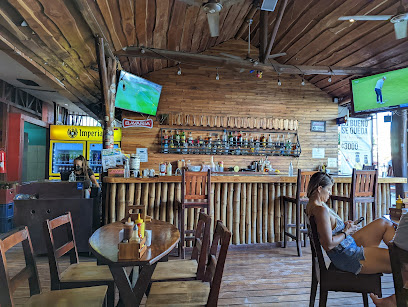
El Vaquero
Discover the vibrant flavors of Costa Rica at El Vaquero in Tamarindo - where culinary excellence meets local craft brews.
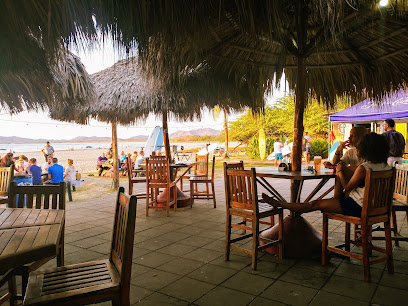
Markets, malls and hidden boutiques
Papaya Con Leche
Discover the essence of Costa Rican fashion at Papaya Con Leche, your go-to clothing store in Tamarindo for unique, tropical-inspired styles.

Casa Mare Tamarindo
Explore the stylish offerings at Casa Mare Tamarindo, where fashion meets the vibrant spirit of Guanacaste in a charming dress boutique.
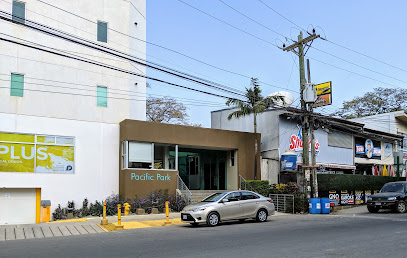
Guana Beachwear
Discover unique, locally designed beachwear at Guana Beachwear in Tamarindo, capturing the vibrant spirit of Costa Rica's coastal life.
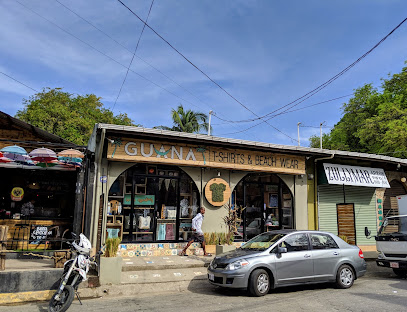
Matos Surf Shop Tamarindo
Experience Costa Rica's surf culture at Matos Surf Shop Tamarindo, your one-stop shop for surf gear, beachwear, and unforgettable adventures.
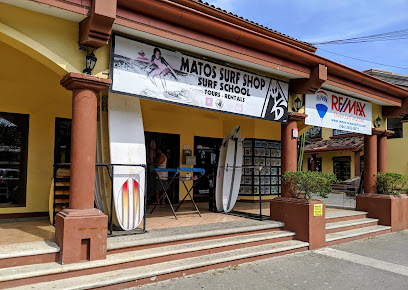
Azul Profundo Boutique
Discover unique clothing and artisan souvenirs at Azul Profundo Boutique, the heart of Tamarindo's shopping scene.
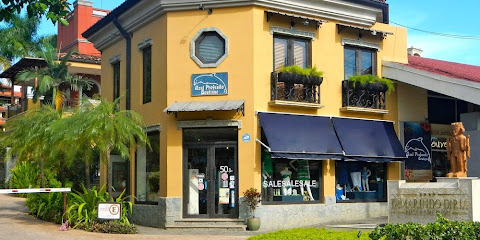
Buena Nena Tamarindo
Discover the essence of Costa Rican fashion at Buena Nena Tamarindo, where local style meets tropical flair in an unforgettable shopping experience.
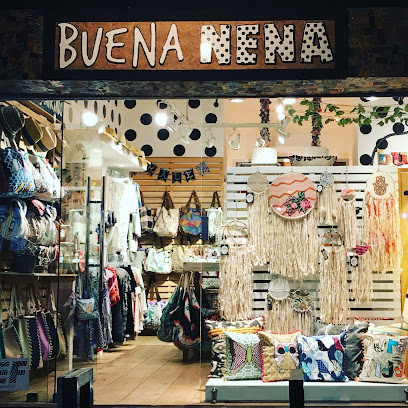
Guana Tribe Souveniers
Explore Guana Tribe Souveniers in Tamarindo for unique, handcrafted Costa Rican treasures that capture the essence of local culture and artistry.
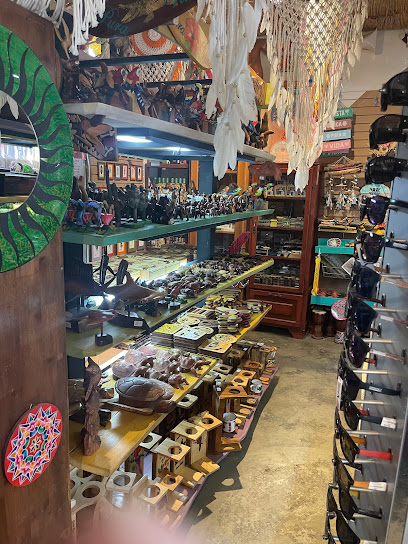
Áurea Concept Store
Explore the charm of Áurea Concept Store in Tamarindo, where unique, locally-sourced treasures await every traveler.
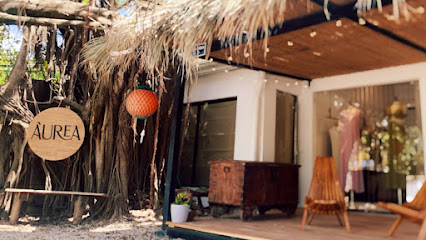
El Taller Secreto - Handmade Souvenir
Discover the essence of Costa Rican craftsmanship at El Taller Secreto, your go-to destination for unique handmade souvenirs in Tamarindo.
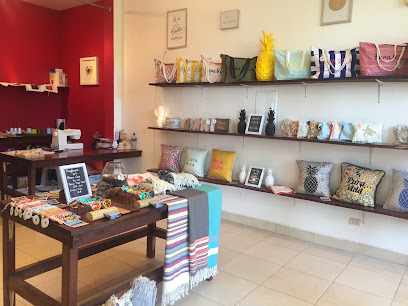
OBJECT - Concept Store
Explore OBJECT - Concept Store in Tamarindo for unique artisanal finds and stylish souvenirs that capture the spirit of Costa Rica.

Alegria Soap Shop & Factory
Immerse yourself in the artistry of handmade soap and unique gifts at Alegria Soap Shop & Factory in Tamarindo, Costa Rica.
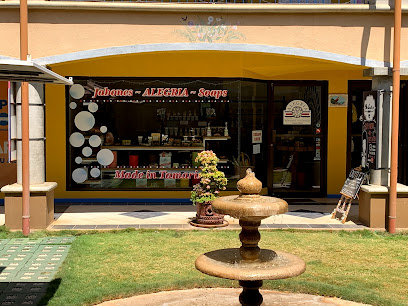
BENDITA
Explore BENDITA in Tamarindo for the latest in women's fashion, blending local flair with contemporary style in a tropical paradise.

Souvenir costa tamarindo
Discover unique Costa Rican souvenirs at Souvenir Costa Tamarindo, where local artistry meets unforgettable keepsakes.
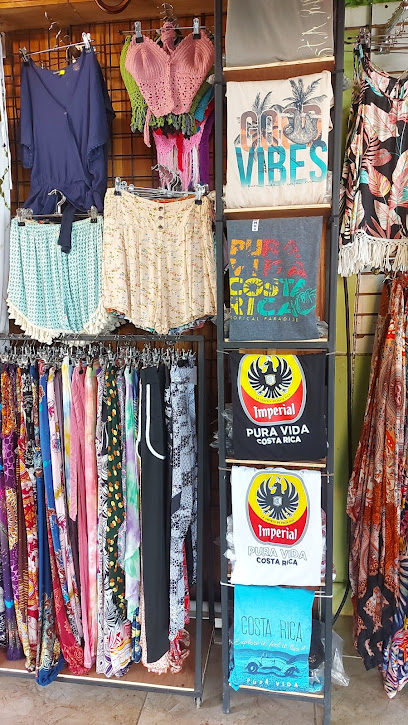
Alegría Soaps & Gift Shop
Discover Alegría Soaps & Gift Shop in Tamarindo – your destination for handcrafted soaps and unique Costa Rican gifts.
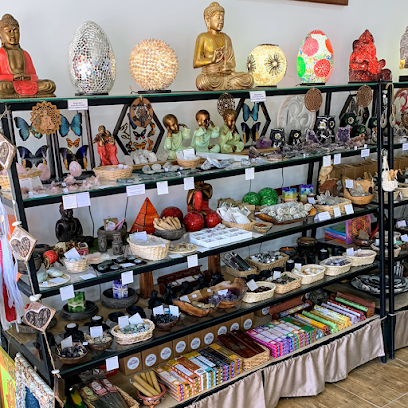
Double six
Explore Double Six Boutique in Tamarindo for stylish beachwear and unique accessories that embody the vibrant Costa Rican lifestyle.
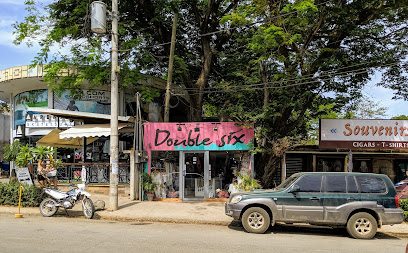
Essential bars & hidden hideouts
Sharky’s Sports Bar
Experience the thrill of sports and the taste of local cuisine at Sharky’s Sports Bar in Tamarindo, where every game is a celebration.
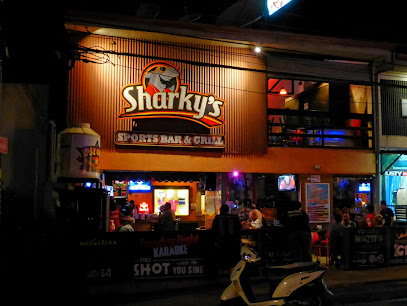
Pangas Beach Club
Experience the beauty of Costa Rican cuisine with stunning ocean views at Pangas Beach Club, Tamarindo's premier seaside dining destination.
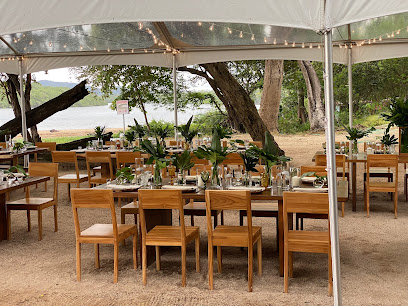
Dragonfly Bar & Grill
Discover the vibrant flavors of Costa Rica at Dragonfly Bar & Grill, where culinary excellence meets a tropical paradise.
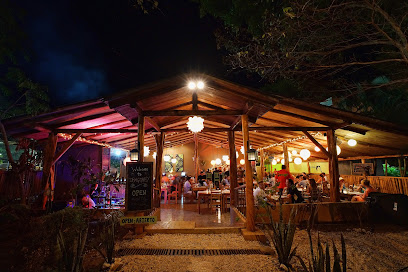
Pikatas Tamarindo
Discover the vibrant atmosphere and delicious cuisine of Pikatas Tamarindo, the ultimate bar and restaurant experience in Guanacaste, Costa Rica.
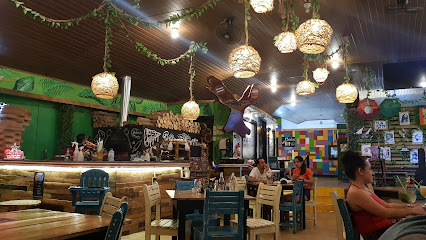
El Vaquero
Discover El Vaquero in Tamarindo: A culinary haven blending local flavors with craft brews in a relaxed beachside atmosphere.
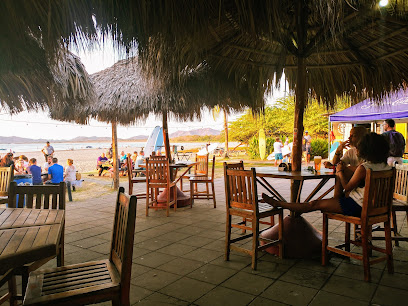
El Be - Tamarindo Beach Club
Experience vibrant beachside dining at El Be - Tamarindo Beach Club, where delicious cuisine, refreshing drinks, and stunning ocean views await.
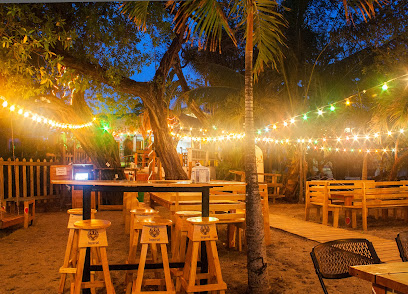
La Oveja Surf House
Experience the vibrant surf culture and delicious local cuisine at La Oveja Surf House in Tamarindo, Costa Rica.
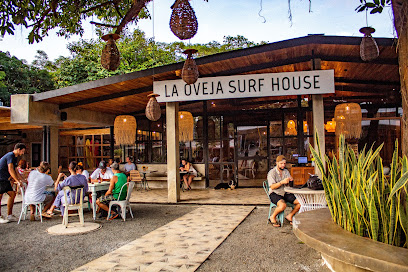
Rumors Tamarindo
Discover the lively charm of Rumors Tamarindo, where delicious cuisine meets enchanting piano melodies in the heart of Guanacaste.
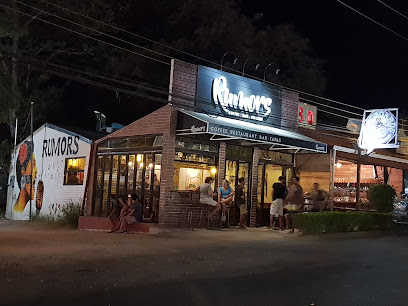
Tropic Tamarindo
Experience the vibrant flavors and tropical ambiance of Tropic Tamarindo, a top bar and restaurant in the heart of Tamarindo, Costa Rica.
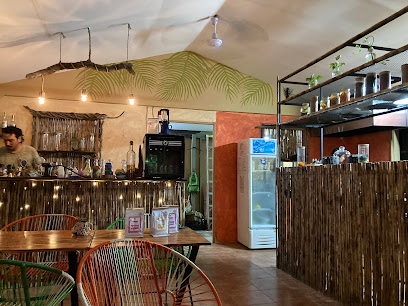
Chop House
Discover the vibrant flavors of Chop House in Tamarindo, a must-visit for gourmet burgers, tapas, and a lively sports bar experience.
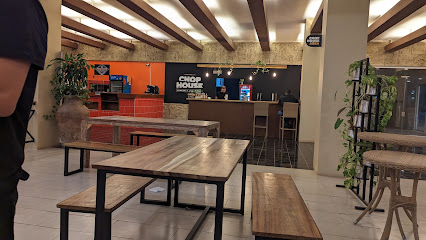
Wild Panda
Discover the vibrant atmosphere and delicious flavors of Wild Panda, the ultimate bar and restaurant in Tamarindo, Costa Rica.
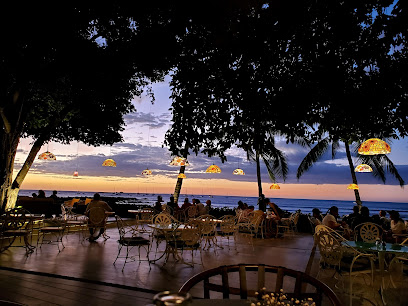
Crazy Monkey Bar
Discover the lively atmosphere of Crazy Monkey Bar in Tamarindo, where delicious cuisine meets vibrant nightlife in the heart of Guanacaste Province.
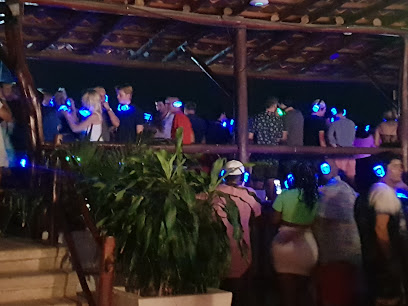
Lizard Lounge Tamarindo
Experience the vibrant flavors of Costa Rica at Lizard Lounge Tamarindo, a top tapas destination in the heart of Tamarindo's bustling nightlife.
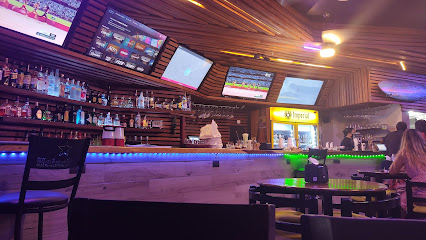
Ocho Beach Club
Discover tropical bliss at Ocho Beach Club, a vibrant bar and restaurant in Tamarindo, offering delicious cuisine and stunning ocean views.
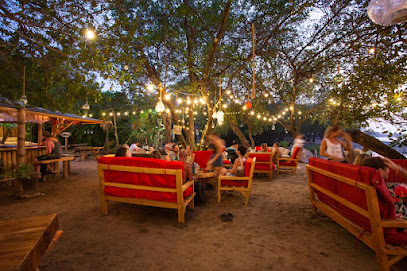
CATA Agave Bar
Discover the best mezcal and tequila cocktails at CATA Agave Bar in Tamarindo, where vibrant atmosphere meets exceptional flavors.
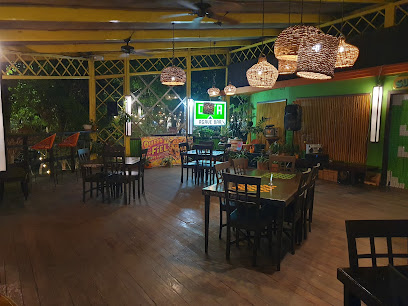
Local Phrases
-
- HelloHola
[oh-lah] - GoodbyeAdiós
[ah-dee-ohs] - YesSí
[see] - NoNo
[noh] - Please/You're welcomePor favor/De nada
[por fah-vor/deh nah-dah] - Thank youGracias
[grah-see-ahs] - Excuse me/SorryDisculpe/Perdón
[dee-skool-peh/pehr-dohn] - How are you?¿Cómo estás?
[koh-moh ehs-tahs] - Fine. And you?Bien. ¿Y tú?
[byehn. ee too] - Do you speak English?¿Hablas inglés?
[ah-blahs een-glehs] - I don't understandNo entiendo
[noh ehn-tee-ehn-doh]
- HelloHola
-
- I'd like to see the menu, pleaseMe gustaría ver el menú, por favor
[meh goos-tah-ree-ah behr ehl meh-noo, poor fah-vor] - I don't eat meatNo como carne
[noh koh-moh kahr-neh] - Cheers!¡Salud!
[sah-lood] - I would like to pay, pleaseMe gustaría pagar, por favor
[meh goos-tah-ree-ah pah-gahr, poor fah-vor]
- I'd like to see the menu, pleaseMe gustaría ver el menú, por favor
-
- Help!¡Ayuda!
[ah-yoo-dah] - Go away!¡Vete!
[veh-teh] - Call the Police!¡Llama a la policía!
[yah-mah ah lah poh-lee-see-ah] - Call a doctor!¡Llama a un médico!
[yah-mah ah oon meh-dee-koh] - I'm lostEstoy perdido/a
[ehs-toy pehr-dee-doh/ah] - I'm illEstoy enfermo/a
[ehs-toy ehn-fehr-moh/ah]
- Help!¡Ayuda!
-
- I'd like to buy...Me gustaría comprar...
[meh goos-tah-ree-ah kohm-prahr...] - I'm just lookingSolo estoy mirando
[soh-loh ehs-toy mee-rahn-doh] - How much is it?¿Cuánto cuesta?
[kwan-toh kwehs-tah] - That's too expensiveEso es muy caro
[eh-soh ehs moo-ee kah-roh] - Can you lower the price?¿Puede bajar el precio?
[pweh-deh bah-har ehl pree-syoh]
- I'd like to buy...Me gustaría comprar...
-
- What time is it?¿Qué hora es?
[keh oh-rah ehs] - It's one o'clockEs la una en punto
[ehs lah oo-nah ehn poon-toh] - Half past (10)Media (10)
[meh-dee-ah (diez)] - MorningMañana
[mah-nyah-nah] - AfternoonTarde
[tahr-deh] - EveningNoche
[noh-cheh] - YesterdayAyer
[ah-yehr] - TodayHoy
[oy] - TomorrowMañana
[mah-nyah-nah] - 1Uno
[oo-noh] - 2Dos
[dohs] - 3Tres
[trehs] - 4Cuatro
[kwah-troh] - 5Cinco
[seen-koh] - 6Seis
[seys] - 7Siete
[syeh-teh] - 8Ocho
[oh-choh] - 9Nueve
[nweh-veh] - 10Diez
[diez]
- What time is it?¿Qué hora es?
-
- Where's a/the...?¿Dónde está...?
[dohn-deh ehs-tah] - What's the address?¿Cuál es la dirección?
[kwal ehs lah dee-rehk-syohn] - Can you show me (on the map)?¿Puede mostrarme (en el mapa)?
[pweh-deh mohs-trahr-meh (ehn ehl mah-pah)] - When's the next (bus)?¿Cuándo es el próximo (autobús)?
[kwan-doh ehs ehl proh-ksee-moh (ow-toh-booce)] - A ticket (to ....)Un boleto (a ...)
[oon boh-leh-toh (ah ...)]
- Where's a/the...?¿Dónde está...?
History of Tamarindo
-
Before the arrival of Christopher Columbus, the area now known as Tamarindo was inhabited by indigenous tribes, such as the Chorotegas and the Nicoya people. These groups were part of the larger Mesoamerican cultural region and engaged in agriculture, fishing, and trade.
-
In the 16th century, Spanish explorers arrived in the region, marking the beginning of European colonization. The indigenous populations suffered greatly due to diseases brought by the Europeans and the imposition of the encomienda system. The Spanish influence introduced new agricultural practices, livestock, and crops like sugar cane and coffee.
-
Throughout the 18th and 19th centuries, the area around Tamarindo primarily focused on agriculture. Cattle ranching and farming were the main economic activities. The fertile lands supported crops such as maize, beans, and tropical fruits, contributing to the local economy and sustenance.
-
In 1824, the region of Guanacaste, which includes Tamarindo, became part of Costa Rica. The annexation of Guanacaste from Nicaragua was a significant event, celebrated annually on July 25th as 'Guanacaste Day'. This event is a point of pride for the locals and is marked by cultural festivities and historical reenactments.
-
The late 20th century saw a dramatic shift in Tamarindo's economy with the rise of tourism. The town's pristine beaches, excellent surfing conditions, and biodiversity attracted international visitors. Hotels, restaurants, and other tourist-centric businesses began to flourish, transforming Tamarindo into a bustling tourist destination.
-
As tourism grew, so did awareness of the need for environmental conservation. Tamarindo is located near the Las Baulas National Marine Park, established in 1990 to protect the endangered leatherback sea turtles that nest on its beaches. Efforts to balance tourism with environmental sustainability remain a crucial aspect of the local culture and policies.
-
Tamarindo hosts several cultural events throughout the year, reflecting its rich heritage. The 'Tamarindo Art Wave' festival showcases local and international artists, while traditional Costa Rican fiestas celebrate the town's history and community spirit with music, dance, and local cuisine.
Tamarindo Essentials
-
Tamarindo is located on the Pacific coast of Costa Rica. The nearest international airport is Daniel Oduber Quirós International Airport (LIR) in Liberia, which is about a 1-hour drive from Tamarindo. Alternatively, Juan Santamaría International Airport (SJO) in San José is approximately a 4-hour drive away. From either airport, you can rent a car, take a shuttle service, or hire a taxi to reach Tamarindo. Public buses also operate routes to Tamarindo from major cities like Liberia and San José.
-
Once in Tamarindo, getting around is relatively easy. The town is compact and walkable, making it convenient to explore on foot. For longer trips or to visit nearby attractions, you can rent a car, ATV, or scooter. Taxis are also available, and many hotels can arrange transportation for you. Public buses run to nearby towns, but schedules can be irregular. For a more personalized experience, consider hiring a local guide for tours.
-
The official currency in Costa Rica is the Costa Rican Colón (CRC). U.S. dollars are widely accepted in Tamarindo, especially in tourist areas. Credit and debit cards are commonly used in hotels, restaurants, and shops, but it is advisable to carry some cash for smaller establishments or street vendors. ATMs are available throughout the town, but be mindful of potential fees for international withdrawals.
-
Tamarindo is generally safe for tourists, but it's important to take standard precautions. Avoid walking alone at night in poorly lit areas and keep an eye on your belongings, especially on the beach and in crowded places. While Tamarindo is not known for high crime rates targeting tourists, petty theft can occur. Always secure your valuables and use hotel safes when available.
-
In case of an emergency, dial 911 for immediate assistance. Tamarindo has a local police station and medical clinic. For more serious medical issues, the nearest hospital is in Liberia, about an hour's drive away. It's recommended to have travel insurance that covers medical emergencies. Pharmacies are available in Tamarindo for minor health concerns and over-the-counter medications.
-
Fashion: Do wear light, breathable clothing suitable for the tropical climate. Don't wear overly revealing swimwear away from the beach. Religion: Do respect local customs and traditions, especially in religious settings. Public Transport: Do be punctual, as buses may leave early. Don't expect luxury; public buses are basic but functional. Greetings: Do greet people with a friendly 'Hola' or 'Buenos días.' A handshake is common among acquaintances. Eating & Drinking: Do try local dishes like gallo pinto and fresh seafood. Don't drink tap water; stick to bottled or filtered water.
-
To experience Tamarindo like a local, visit the Saturday farmers' market for fresh produce and handmade goods. Engage with locals to learn about the best surf spots and hidden beaches. Try the local sodas (small family-run restaurants) for authentic Costa Rican meals at reasonable prices. Don't miss out on the town's vibrant nightlife, which includes live music, dance clubs, and beachfront bars.
Trending Landmark in Tamarindo
-
Occidental Tamarindo
-
Tamarindo Diria
-
El Mercadito de Tamarindo Food and Cocktail Market
-
Playa Avellanas
-
Tamarindo Beach Costa Rica
-
Tamarindo, Costa Rica
-
L' Estanco El Jardin Escondido
-
Nogui's Restaurant
-
Little Lucha
-
Selina Tamarindo
-
Pangas Beach Club
-
Iguana Surf Camp & Surf Shop
-
La Botella de Leche
-
Capitán Suizo Beachfront Boutique Hotel
-
Surf Shack Burgers & Wings
Nearby Cities to Tamarindo
-
Things To Do in Playa Flamingo
-
Things To Do in Guanacaste
-
Things To Do in Liberia
-
Things To Do in San Juan del Sur
-
Things To Do in Monteverde
-
Things To Do in Rivas
-
Things To Do in La Fortuna
-
Things To Do in Ometepe
-
Things To Do in Jaco
-
Things To Do in Granada
-
Things To Do in Masaya
-
Things To Do in San Jose
-
Things To Do in Managua
-
Things To Do in Manuel Antonio
-
Things To Do in Jinotega












